

We

Boiler Breakdowns
Boiler Servicing
Radiators & Pipes
Tanks & Cylinders
Toilets & Taps
Leaks & Bursts
Showers
Clearing Blockages
Pipework Replacement
Gas





We

Boiler Breakdowns
Boiler Servicing
Radiators & Pipes
Tanks & Cylinders
Toilets & Taps
Leaks & Bursts
Showers
Clearing Blockages
Pipework Replacement
Gas


Hello Readers,
So, this year is zipping by isn’t it! I remember my Grandmother telling me about how time gets faster as you grow older. I obviously ignored her as she was possibly older than the dinosaurs…but as usual, she was right!
Anyway, speaking of time zipping by, we’ve gone with quintessentially English summer holidays on our front covers this month, 1950’s style. Ah the memories… Grandad with a hanky on his head, trousers rolled up ready for a paddle and those absolutely massive steps at Mablethorpe, which felt like climbing Everest! Oh and the fun fair – happy memories – or not so much to be honest. My Grandparents just took me and my Brother around the Funfair to “have a look”…. I think they were inspired by Jim Bowen and Bullseye… “look at what you could have won”.
Anyway, the other thing I like to do in the summer months, is to have a good clear out of some old bits and bobs, furniture, clothing etc (I don’t know why I prefer summer to spring?!). I’ve posted some bits on Facebook Marketplace etc and I’ve scheduled to do a car boot (which Mr Emily really hates!!). I love doing stuff like this. However, I don’t know if it’s just me getting older but are there more scammers these days? Posting items online is an absolute minefield, from the time wasters who are ‘definitely not time
wasting’, to the ‘can I pay on Paypal friends and family’ (which protects them and not you when they don’t pay).
It does make you realise why so many charity shops are inundated with items, because most people prefer to donate rather than have the faff of scammers! Not to mention the much-needed degree in research needed to be able to buy online, with all the dodgy websites, and poor ratings even if they are real!! Don’t get me wrong, digital platforms have their place, Pandora isn’t going back in that box for sure – the Tech Bro’s have us by the short and curlys!! Perhaps an answer will present itself, but for now I spend much of my time cynically guarding my data like a squirrel and their nuts!
Anyway, back to the clear out……might have a cheeky Vimto outside in the sunshine first….it’d be rude not to wouldn’t it!!



There’s something utterly charming about retro seaside postcards. Bold colours, cheeky humour, and scenes that capture the golden age of British beach holidays – these little cards packed a punch. Before texts and selfies, a saucy postcard with a stick of rock was the ultimate “wish you were here” message.
First popular in the early 1900’s and booming through the 1950’s to 70’s, these cards became holiday staples. Many featured cartoon illustrations – often with a hefty dose of double entendre. Think knobbly knees contests, overstuffed swimsuits, and hen-pecked husbands snoozing behind windbreaks. They were cheeky, yes, but rarely offensive, offering a gentle giggle for all ages.
The classic British beach scenes – donkey rides, striped deckchairs, pier amusements, and overflowing ice cream cones – were lovingly (or sometimes ridiculously) exaggerated. Postcards from Blackpool, Skegness, Margate, and Brighton filled racks outside newsagents, waiting for sunburnt holidaymakers to pick one out, scribble a quick note, and send it off to friends and family back home.
Beyond their humour, these postcards also offer a slice of social history. They reflect how

we dressed, holidayed, and saw the world. In an era before mobile phones and social media, sending a postcard was a key part of the holiday ritual. It showed you were really away.
Today, retro postcards are collected, framed, and celebrated for their kitsch charm. They spark memories of soggy chips on the prom, buckets and spades, and chasing wasps away from your jam sandwich. And while you might not post one now (the postbox is always too far away), their spirit lives on in seaside shops and novelty gifts.
So next time you’re by the coast, take a moment to flick through a postcard rack. Among the faded puns and punchlines, you’ll find a little time capsule – a laugh from the past, wrapped up in a glossy 6x4.












Nestled in the Derbyshire countryside, CHARLIE’S PLACE ANIMAL SANCTUARY is more than just a rescue centre - it’s a haven for animals and a thriving volunteer community.
A SANCTUARY WITH HEART
Founded in 2018 by animal advocates Claire and Wil, following many years of taking in, rehabilitating and caring for a plethora of species. Now a registered charity, it’s home to around 100 rescued animals, many from the egg and meat industries.
WILDLIFE RESCUE AND REHABILITATION
Charlie’s Place also operates an on-site wildlife hospital, treating over 100 injured or orphaned wild animals a year - from owls to hedgehogs. Once recovered, they’re released back into their natural habitats, helping protect local biodiversity.
Charlie’s Place thrives thanks to the dedication of volunteers and the generosity of supporters. Ways to get involved:
• VOLUNTEER – Help with animal care, wildlife transport, or fundraising.
• DONATE – Regular donations give the sanctuary long-term stability and help provide food, shelter, and medical care.
• SPONSOR OR ADOPT – Support an enclosure or symbolically adopt an animal.
• FUNDRAISE OR JOIN EVENTS – Run a race, bake cakes, or attend events like quizzes or yoga.
Check the Charlie’s Place Facebook page or www.charliesplace.org.uk for more information.
WHY VOLUNTEER?
“I chose to volunteer to help protect and rehabilitate wildlife. This provides a fulfilling opportunity to make a tangible difference in the lives of animals while supporting broader conservation efforts.”
“Volunteering gives many of us purpose, moments of calm and an opportunity to connect with others who we might not normally interact with, helping to shape lives and broaden horizons.”




VOLUNTEERS’ THOUGHTS: GET
You’ll meet like-minded people, learn new skills, and make a real difference in the lives of animals. Whether you can offer a few hours a week or just help out at events, your support is invaluable. Go to our website and fill out a volunteer form. IF YOU CAN HELP WITH TIME, SKILLS, OR SUPPORT - GET IN TOUCH:
“Ilovefeelinglike Ihaveapositiveinfluenceonthelives oftheanimalshere,Charlie’splace reallymakesadifference.”


FOR KINDNESS, COMPASSION, AND COMMUNITY - AND THEY NEED PEOPLE LIKE YOU
Don’t forget to mention Voice



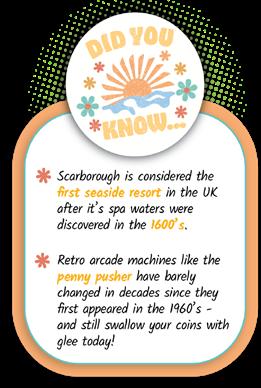



























































































































































































































































Based in Ilkeston, Derbyshire, Priority Stairlifts is “We know how personal this decision can feel,” says “Our job is to take away the stress and guide you through your options. There’s no hard sell, just thoughtful advice.”
It’s not just about the installation. The team offers 24-hour aftercare and support, so help is always on hand if needed.
Priority Stairlifts are proud members of Which?, Trusted Traders, Checkatrade and Derbyshire Trusted Trader with over 100 five-star reviews from happy customers.
Whether you’re considering a stairlift for yourself or a loved one, or simply want to understand your options, Priority are here to help.








It’s been a summer to remember at Amber Valley Rugby Club - packed with fun, fitness, touch rugby, and fantastic festivals. But now, it’s time to lace up those boots and get ready for the real deal… the new season is nearly here! Pre-season training is already in full swing for our Men’s, Women’s, and Under 15s squads - with plenty of hard work, laughter, and the occasional sprint-induced groan. Our Minis and Juniors return in early September, and we can’t wait to welcome back our rugby superstars of the future. The Men’s First XV are gearing up for their first friendly on Saturday 9th August, and we’d love to see a big crowd cheering them on. Whether you’re looking to join as a player, dust off your boots, or simply support your local club with a pint and a cheer - there’s a place for you at Amber Valley RUFC.
Rugby is more than just a game - it’s fitness, friendship, and community all rolled into one. Come and be part of something special L ET’S MAKE THIS SEASON OUR BEST ONE YET
- SEE YOU ON THE PITCH!




Interested in giving rugby a try? call Stuart 07966 867 946 for the men, Gareth 07595 520 537 for the ladies and Paul 07790 403 043 for the Minis and Juniors.
More than just a club, we are the #ValleyFamily. You can visit our website www.ambervalleyrfc.co.uk, Facebook & Instagram pages to contact us or follow what we do. You can find us at Lower Somercotes, Somercotes, Alfreton DE55 4NQ

Mr Jonathan Harper BSc(Hons) Podiatry. HCPC registered Podiatrist/Chiropodist, Member of the Royal College of Podiatry (RCPod) 20 Years NHS/private practice experience treating foot and ankle disorders for adults and children.
• Offering treatment for the following:
• Corns, calluses, other problematic skin problems. Thickened/fungal nails
• Infected ingrowing toenails ingrowing (Nails surgery under local anaesthetic available)
• Verrucas and warts (hands and feet)
• Fungal skin and nail infections
• High Risk group foot care and diabetic foot assessments
• Foot and ankle pain and sports injuries including injection therapy avpodc@outlook.com


Week day and Saturday appointments available. See our reviews on yell.com
37 Mansfield Road, Alfreton. DE55 7JJ (Formerly James Matthews Chiropody Clinic) FOR ENQUIRIES PLEASE CONTACT: T: 01773 831433/07554 010033













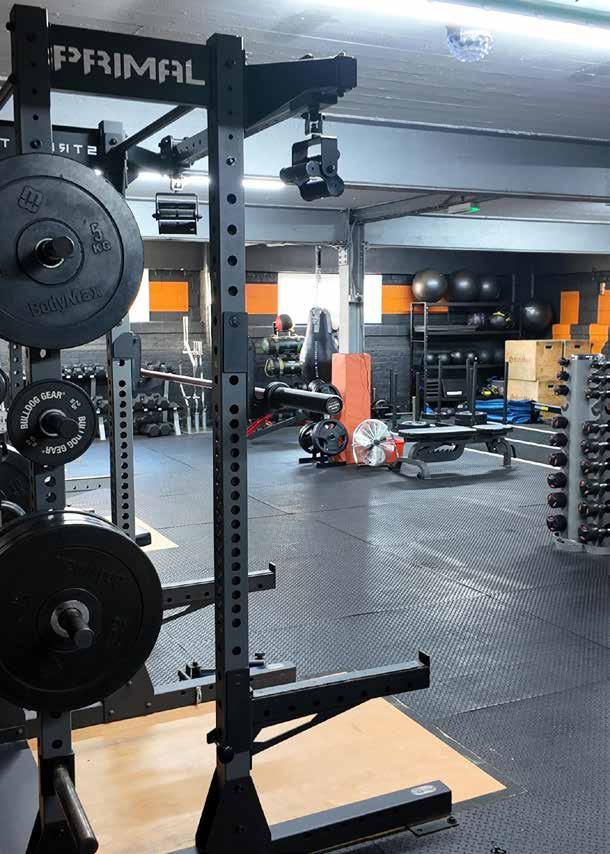



We are more than just a gym, we specialise in Small Group Personal Training (SGPT) and 1-1 Personal Training, giving you expert coaching, real results and a no nonsense approach to fitness.
For over 10 years, we’ve been helping people become stronger, fitter and healthier in a supportive and motivating environment.
Whether you thrive in a group setting or prefer a fully personalised plan, we’ve got you covered.
No matter where you’re starting from, we’re here to guide you every step of the way.
We will arrange a consultation by phone call or alternatively, arrange a time for you to pop down and visit the gym before purchasing your membership
Members typically purchase the 30 Day Start Up initially, before committing to one of our Monthly Memberships.
After purchasing a membership, an Onboarding Session will be scheduled, during which we will meet in person if that has not already occurred.
Mobility, stability, any restrictions, and current fitness level will be assessed during the Onboarding session and goals such as building strength, endurance, or fat loss will also be determined.
This will provide a clear starting point and allow training to be tailored accordingly.

























Method:
1. Heat your oven to 220°C/fan 200°C/gas 7 and line a baking tray with baking paper.
2. Spray a non-stick frying pan with low-calorie cooking spray and put it over a medium heat. Add the onion, carrot, chilli and spices, and cook for 10 minutes. Add 2 tbsp water and cook for about 30 seconds or until the water has been absorbed.
3. Tip the onion mixture into your food processor and add the fish and flour. Chop 2 tbsp coriander and set aside, then add the rest to the food processor along with a pinch of salt. Pulse until you have a thick mixture. Spoon the fish mixture into 16 equal-size
For more information visit www.slimmingworld.co.uk

Fancy something a bit spicy for your alfresco dinning? These cod pakoras pack the perfect punch!
mounds on the prepared baking tray, spaced apart. Spritz the tops with low-calorie cooking spray and bake for 20-25 minutes or until golden.
4. Once the pakoras are in the oven, make the dip: Put the yogurt in a bowl and stir in most of the mint and reserved coriander. Season lightly with salt, then chill.
5. Sprinkle the pakoras with the remaining herbs and serve with the yogurt dip, lime slices or wedges and lots of chunky Speed veg (plus rice if you’re making a bigger meal of it).
Makes: 16 Syns per serving: 1/2
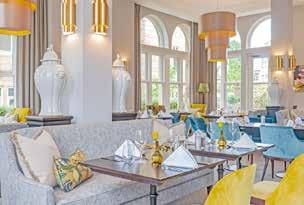


• Low-calorie cooking spray
• ½ medium onion, grated
• 1 large carrot, grated
• 1 red chilli, deseeded and chopped
• 1 tsp ground turmeric
• 1 tsp cumin seeds
• 2 tbsp medium curry powder*
• 600g skinless and boneless cod fillets (or another firm white fish)
• 4 level tbsp selfraising flour
• Small pack fresh coriander
• Lime slices or wedges, to serve
• For the yogurt dip:
• 200g fat-free natural yogurt
• 2 tbsp chopped fresh mint
*Watch out for spice/ seasoning blends that have added ingredients (like sugar, oil or starch). To protect your weight loss, count 1½ Syns per level tbsp.
Ready in: 45 mins


Many of you will remember the Post Mill at South Normanton. The skeletal remains of the mill stood in the garden of a bungalow on Windmill Rise. The oak timber structure of the post mill was probably erected in 1805. It stood close to the site of an earlier post mill, which was thought to have blown down, the remains were offered for sale at auction in 1810.
The builder, probably Thomas Wass, a millwright from Sutton-in-Ashfield. Trade directories show it remained in the hands of the Wass family throughout its life, the last miller (1871 to 1908) being another Thomas Wass. Memories from that period recall that ‘the mill was pushed round by the tailpole and how Mr Wass used to hold his handkerchief up to test the wind’. When Thomas Wass died in 1908 the mill had ground its last corn and was left to decay in the middle of a field.
A report on the structure and associated machinery in 1960 noted that mill had lost most of its cladding and that the tail ladder was offset relative to the centre of the buck. The roof had a rounded shape to permit a larger diameter brake wheel to be used. This wheel was of clasp arm construction and had 56 wooden cogs. There were two pairs of over driven stones, and in the tail of the mill was the remains of a white flour dressing machine. The sails had been mounted in a cast iron poll end (or canister) on the end of wooden wind shaft. The mill deteriorated over the years, the progressive decay being evident. Eventually it stood in the garden of a bungalow, within a housing estate. When the owner of the property, Mrs H Samson, died in the
mid, 1970s it was sold at auction for £12. 0s 10d with rumours suggesting it was nearly destined to be used as firewood.
There was local outcry, the ownership of the structure passed to Bolsover District Council (BDC) who gave it Grade 2 listing to ensure its safety. By 1980 the structure was considered unsafe and BDC decided to dismantle it and put it into safe storage, pending re-erection elsewhere. Detailed, numbered, drawings of the structure and timbers were made, and the advice of a millwright was sought on how it should be stored. He suggested the timbers should be stored off ground and separated from each other in a well-ventilated, covered, area. The structure was dismantled by contractors, each piece given a unique number and removed from the site. Various proposals for re-erection were made but attempts to find a site ceased and the mill fell from the public eye. In 1993, Alan Gifford, a Mill enthusiast asked BDC for information on the timbers. He was told they had been given to the Midland Railway Trust, but that information proved inaccurate, it wasn’t until 1995, BDC located the timbers in a builder’s yard in South Normanton which had previously been council property. A visit to the site in February of that year could hardly have been more distressing. The timbers, wet and decaying, were lying scattered, on open ground, surrounded by grasses and bushes.
The Midland Mill Group agreed to finance moving the heavy timbers to an area at the Midland Railway Trust, Butterley. They were sympathetic to the idea of saving whatever could be salvaged of the mill. The beams and other timbers were to be moved and set up on old railway sleepers and left to partially dry out, after which they were to be examined to determine their future. An initial plan had been to erect the remains at Butterley but the plan was abandoned when the examination showed that much of the structure was rotten and would have to be scrapped. At South Normanton, the three stone piers, on which the mill had stood are all that remains of the once proud Post Mill but at least the name lives on through The Post Mill Centre.













For those who seek more than just a holiday - who crave meaning, connection, and a deeper understanding of the world - National Geographic Journeys with G Adventures offer something truly special.
These small-group tours are designed for discerning travellers who value comfort, insight, and authenticity. Whether you’re tracking wildlife across the Serengeti or exploring the Acropolis with a National Geographic-trained archaeologist, every journey immerses you in the heart of local culture, history, and nature.
But these trips are about more than just unforgettable experiences. Every booking helps support the National Geographic Society, funding vital work in exploration, research, and education to protect the planet we all share.
If you believe that travel should enrich your life - and help preserve the places you visit - then it’s time to explore with purpose.
Ready to discover your next meaningful adventure? Get in touch today and let’s find the journey that speaks to you.

Check out our brochure



Chooseyournewblinds&curtainsfromthecomfortof yourownhomewithourfreehomesurveyorvisit ourshowroom(Just2minsfromIKEA)


Everyone loves a wedding – don’t they? Maybe unless you happen to be depressed and newly divorced Phoebe who has arrived at an expensive hotel at a very swish Rhode Island resort with the express intention of it being her last stop anywhere.
Then she discovers this final refuge has been entirely – apart from her - taken over by a wedding party for a very rich spoiled young thing. Who is devastated by the thought of how Phoebe’s intentions will “ruin” her nuptials when she finds out her plans for the afterlife.
The Wedding People by Alison Espach sounds like it could be the most uncomfortable read of the summer. Either unbearably sentimental or trying to be funny when really, the subject matter isn’t funny.
Actually it turns out to be a real delight. In places it is genuinely funny, the conversations are often whip smart. But it also makes you think; the characters have real depth, and you find yourself agreeing with the third person narrator on so much about life and the bigger picture. And not in a maudlin way.
It is genuinely and unexpectedly a story which stays with you when you’ve finished it. I bought it thinking it would be a quick summer read after reading a review that said it was hilarious and moving. It is so much more.
This month’s walk starts in Ollerton and around the beautiful countryside before taking you through the grounds of Rufford Country Park. Somehow, we managed to pick the only wet day for weeks and halfway round the heavens opened and we got absolutely soaked! Hopefully, you get better weather to stretch those legs and maybe make a full day of it. Perhaps you could take a picnic or perhaps stop off at the café?
A longer but highly rewarding walk for you and your dog. It should take around 4 hours but there are plenty of opportunities to stop and explore so you may want longer. Be careful on roads and as ever make sure you wear a good pair of boots or wellies particularly if it has been wet.







START: St Giles Church, Ollerton, Notts, NG22 9BL.
1. Standing at the junction of Wellow road and Station Road, whilst facing the church, turn right to climb gently along Wellow road, signposted for Newark. At the T-junction, at the top of the road, turn left along a road signposted for Tuxford. After a short distance turn right onto Middlefield Lane and a sign posted footpath.


Continue straight along the lane until the lane bears right. Follow the lane to the right and cross over a railway bridge. Immediately after the bridge turn left keeping a caravan site on your right. Continue straight and pass a footpath sign on your left. Continue and pass between a fence on your right and a hedge on your left.



3. Continue along this path until it bends to the right. After the right turn, ignore the stile turning sharp left and take a shallow left to continue along a footpath with a fence on either side. When the fence on your right ends and at a T Junction of paths, turn right. Follow this path to a road and cross the road diagonal right to continue along a signposted footpath.
4. Continue straight to cross an open field and then pass through a gap in the hedge. Turn immediately left and continue with the hedge on your left. Upon reaching the boundary of the field turn 90 degrees right and continue with the hedge on your left. Upon reaching the far side of the field turn 90 degrees right and continue with the hedge on your left.
5. Upon reaching a footpath sign, cross over a road diagonal right and pass through a gap in the hedge to follow a signposted footpath. The footpath heads gently uphill. Upon reaching the top of the hill and at a T junction of paths turn sharp left and head towards a yellow marker post.
6. Cross over a horse canter trail and continue climbing down some steps, over a wooden footbridge and back up the other side. Continue straight ahead crossing over 3 stiles and onto a recreation ground. Continue along the recreation ground, keeping the hedge on your right and passing 3 marker posts on your right. At the far side, turn right through a metal gate and onto a road.
7. Turn right along the road passing ‘Potter Lane’ on your left and upon reaching ‘Maypole Road’ on your left, turn right onto a lane and signposted footpath. Continue straight for some distance and when the lane bends sharp left, continue straight through a large metal gate. Turn immediately left keeping a hedge on your left and trees on your right. After a short distance turn right to cross over a metal bridge.
8. After the bridge turn left and continue with a hedge on your right and a steep bank on your left. After a short distance, turn right to cross over a wooden footbridge and then continue to cross a field. Cross another wooden footbridge and then continue straight to cross another field. Pass through a gap in the trees into another field and now continue with a hedge on your right.
9. Continue to pass through a wooden gate and continue with the hedge on your right. (Dogs on leads due to Chickens in field). Continue to pass through a metal gate and then onto a lane. Turn right and continue for some distance along the lane.
10. At a fork in the lane, bear left and pass through an electric gate. (Use the button on the right-hand side to open the gate). Continue along a concrete lane and pass through a metal kissing gate adjacent to a large metal gate.
straight to a T-junction and turn right keeping a tall wall on your left. The lane becomes a road with large houses on either side.
12. Follow this road for some distance until reaching a main road. At the main road turn right. After a short distance turn right into ‘Rufford Park’.
13. Follow a path alongside the road into the park. At the bottom cut diagonal left across a large carpark, following signs for ‘The Abbey’. At the far side of the car park, pass a large signboard on your left and continue to a T-Junction of paths. Turn right and immediate left through an archway following signs for ‘Craft Centre’. (Dogs on leads)
14. Pass through 2 courtyards and a café on your right. Enter a small 3rd courtyard and bear right to pass through a metal gate and down some steps. At the bottom of the steps, turn sharp left passing the Orangery and the Gardens on your right.
15. Follow a path with 4 trees on either side and signposted for ‘Animal Graves’. Continue straight with the Abbey on your left and then take the second path on your left, signposted for ‘Animal Graves’. After a very short distance turn right along a footpath with the animal graves on your left. Immediately after the graves turn left onto a footpath through the trees and eventually into a clearing (Broad Ride). Turn right along Broad Ride.
16. Continue for a short distance and then turn left off of Broad Ride onto a footpath signposted for ‘Ice House’. Upon reaching the Ice House turn right onto a footpath signposted for ‘Woodland Walk’. Continue along this path and just prior to reaching a car park, turn right to head back down Broad Ride towards the Abbey. Halfway along Broad Ride, turn left along a footpath signposted for ‘Lakeland Walks’.
17. Upon reaching a T-junction of paths turn right keeping a lake on your left. After a short distance bear left and then turn left to cross a wooden footbridge, keeping the main lake on your left. Continue to skirt around the lake, crossing 3 more wooden footbridges and then continue straight until reaching a road.
18. Cross straight over the road and continue straight over a signposted Bridleway with a hedge on your left. When the hedge on your left ends continue now with a hedge on your right. Continue to pass trees on your right and then cross an open field until reaching a main road.
19. Turn right along the main road and pass immediately underneath a railway bridge. Continue along the road until reaching a right fork in the road, signposted as ‘Station Road’. Take the right fork and continue until reaching the church.
11. Continue for some distance along a concrete lane whilst passing through a golf course. When the concrete lane bends left follow it, passing a sign for ‘Hole 16’ on your right. Pass by a metal and brick-built bridge. Continue

This walk is for illustrative purposes only. Voice Magazines Ltd takes no responsibility for anyone who chooses to follow this route and encourages all walkers to obey all byelaws and signs and to respect the area they are walking in, ensuring they pick up all dog mess and obey the countryside code at all times.

























Across
1 Bash the razzledazzle, it’s writing on the wall for him! (10)
9 Beat the plot maker at the eating place (5-3)
11 Shiner resulting from a thumping lot of mascara? (5,3)
17 Tax on the way out, but unlikely to be cancelled! (6,4)
Pitcherwits® are crossword puzzles where some of the clues are in pictures.
Sound easy? It’s not called “Pit-your-wits” for nothing! The mixture of cryptic and picture clues, combined with Professor Rebus’ unique sense of humour, will keep you entertained for hours.
Across 6 Unkind? Average? (4)
7 Gem, uncut as yet, revealed in nonflyer (3)
8 Cab to travel on the runway (4)
14 Northern organ to close (4)
15 Woman of habit? (3)
16 Require to make bread, say (4)
Down
3 Final, on a bad loan, is sectional (5)
4 Taped around a skilful answer (5)
12 Incorporate a queen, by the end (5)
13 Work end opened up into martial art (5)





Down
1 Re-cyclists’ site, where the abbot knelt down in remorse? (6,4)
2 Wrongly cites, “I’m from Shem” (7)
5 Leap ecstatically for born free lady? (4,3,3)



10 Corrected, and virtually repaired? (7)

1 Legal jargon, 2 Orb, 3 Age, 4 Tender years, 6 Imprint, 7 Grander, 8 Madeira, 14 Emu, 15 Lax.
9 Loop, 10 Dote, 11 Range, 12 Anti, 13 Inky, 14 Eternal, 16 Neutral axis.
These puzzles are devised by the brilliant Professor Rebus. For more of his puzzles visit www.pitcherwits.co.uk








































































While I was thumbing through some black and white photographs recently, I came across this interesting article by Malcolm Bryan. His wife, Rose, was kind enough to allow me to use this article in The Voice magazine. Regular readers may remember that Malcolm and Rose Bryan wrote Passage To Destruction, a book that covered the fatal air disaster over Annesley Forest over 80 years ago.
Named after Winifred CavendishBentinck, the Duchess of Portland, Auntie Win was born and raised in Stanton Hill terraces where she had the same humble background of most schoolgirls of the Great War years and the early 1920’s. With a family of five boys and six girls, father Parry was a colliery fitter and mother Mary-Ann, a hardworking housewife that had left school at ten years of age to work in a Hucknall cigar factory.
When leaving school at fourteen years of age, like most local girls of the time, Winnie acquired employment in a factory, Chevening. However, eye problems put an end to this task, later becoming a telegram girl at Stanton Hill Post Office. But opportunity was waiting just around the corner for our Winnie. Lord Caernarvon’s sister, Lady Victoria Herbert, required a Kitchen Maid at her home in Dorset and fortunately Winnifred Martin was the lucky applicant.
Lady Victoria, to give her full name and title, Victoria Alexandrina Mary Cecil Herbert CBE (1919) D.G.St.J. was born at Highclere Castle on the last day of December 1874. Lady Victoria was the third child of Henry Howard Molyneux 4th Earl of Caernarvon, and his wife Evelyn, daughter of the Earl of
Chesterfield from the Stanhope family which included Tony WedgewoodBenn, and her brother George, an Egyptologist along with Howard Carter they discovered Tutankhamum’s tomb.
Evelyn died soon after the birth of Victoria leaving much of this young girl’s life in the hands of her Godmother, Queen Victoria. Lady Victoria Herbert remained unmarried throughout her life residing at Purse Caundle Manor, Sherborne, Dorset where she died in 1957.
Purse Caundle Manor was allegedly built by Bad King John as a hunting lodge, much later serving the Royalist cause in the Civil War. Supposedly haunted, a ghostly choir was said to sing in the Upper Gallery, and on a Mid-Summer and Christmas Eve King John’s hounds howl on the bowling green. When asked about the hauntings Auntie Win said she never heard a thing. Winnie was to spend six happy years at The Manor, her Ladyship proving a caring and considerate employer. If proof were needed of this fact, Auntie Win received many gifts including a signed prayer book “To Winnie from Victoria HerbertBest Wishes.” dated 1932, and she was also presented with a gold necklace on her 21st birthday. It was indeed a sad and sombre occasion when Winnie left
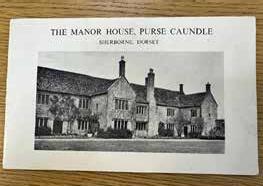
Purse Caundle Manor, her Ladyship suggesting to Auntie Winnie that the time had come to better herself, with the parting, “Always a bed here if you need one.” Winnie finally left on Lady Victoria’s recommendation to work for the Duke and Duchess of Norfolk.
Indeed, Winnie Martin was employed by many of the Premier Earldom or “higher class” employers up to the beginning of the Second World War. Her memories of being a kitchen maid on the Norfolk’s estate at Everingham near Market Weighton, North Yorkshire, or the one in Scotland were of “visiting nobs” as she called them, and the provision of much food for the shooting parties.














As I write this, we are experiencing heatwave conditions and my mind turns back to how we kept cool years ago. Many people we come across in our talks tell us their traumatic memories about the knitted bathing costumes they had to wear as children. A kind friend has knitted us a couple of swimsuits from original patterns and when we show these, people explain how the costumes, weighed down with water, would reveal all as they stood up!
Bargeboards
Cladding
For myself, I remember going out for the day with grandparents and paddling in a stream or shallow river wearing just a pair of pants. Of course, grandad had his knotted hankie on his head, but we didn’t know about the dangers of sunburn in those days.
Guttering Minor
who sat atop a raised chair, so he had a good view of all the misdemeanours. He used a piercing whistle and was quick to scold anyone who was having too much fun. After our swim, we queued for the vending machine and hungrily devoured a packet of crisps or a drink of hot chocolate. Great times. MAKING A SPLASH!
In the local swimming pool, the sharp smell of chlorine assaulted your nose as soon as you walked through the changing room door. On the tiles were signs about “petting” and “bombing” not being allowed. Plasters floated in the water and everyone had to wade through the disinfectant foot bath. There was usually a stern attendant


Janet and Paul Barrass are All Around the Shire. Find us on or email: oldfield512@btinternet.com for more information.






Maintenance free Timber Alter native Windo ws & Doors from Evolution. With all the beauty of traditional timber, our wood effect windows and doors have to be seen to be believed.


Maintenance free Timber Alternative Sash Windows from the Bygone Collection. The most energy efficient, authentic, timber alternative sash window on the market. Exceptional build quality, with an unprecedented 12 year guarantee.

Open Monday To Saturday 9.30am - 4.30pm




Timber Windows & Doors. Natural, Constructed from engineered timber, their strength, stability and beauty are guaranteed. Sustainable and ethical, our beautiful timber windows and doors are the logical choice.
Aluco manufactures iconic steel replica, heritage, Art-Deco or industrial-styled glazing solutions. Aluco delivers expertly crafted, cleverly designed, and above all, authentic in style, steel-look windows and doors.



English (as spoken by we Brits) must be a nightmare to learn - (Part 3)
Although nothing like when I was asking what you’d do if you had unlimited powers as PM, some of you have provided me with more weird, wonderful and particularly English words and phrases that we use every day that will undoubtedly confuse those new to the language. Unless you come up with more, this is the last in this mini-series.
PEA SOUPER – it may not be used as often as it was in the post war years, but it nonetheless immediately gives us a clear (hardly the right description!) image of life being brought to almost a standstill in the coal fire induced smog in cities around the UK before the Clean Air Act of 1956 began to make a difference. OK, we know what it means, but try explaining the origin and meaning of the phrase to a foreigner!
SPANNER IN THE WORKS – a common phrase that requires no explanation we’d think but put yourself in the shoes of someone whose English is not as good as yours. Imagine that they’re working on a production line and inadvertently cause a blockage and then, the subsequent look on their face when the gaffer comes down, assesses and fixes the problem, before mildly admonishing him by saying “Well, you really threw a spanner in the works that time!”
BEE’S KNEES – just how confused would the above production worker feel if there was another blockage later in the day when, having watched how the supervisor rectified the situation earlier, he managed, on his own initiative, to resolve the






issue himself, got the line running smoothly once more, only to be later told by the gaffer, “Well done, you’re the bee’s knees.”
FULL OF BEANS – with the suggestion that we’re energetic and lively, we’d take this as a compliment if it was applied to ourselves. How do you think your average Eastern European car washer, struggling with limited English would feel, if, having entertained you with his tuneful whistling as he quickly and efficiently went about replacing your mucky vehicle with one that you could once again be proud of, was told, “Thanks pal. You’re certainly full of beans this morning!”
GUTTED – when you next meet him, you hear that your friendly car washer has, through no fault of his own, lost his job. You commiserate with him and, as you part, say “You must be gutted!”. He then goes home to check his Eastern European/ English dictionary and finds that you apparently think that he’s had his intestines removed.
OVER-EGG THE PUDDING – attending a Donald Trump press conference in three years’ time, you hear him say, amongst other boasts, that he has made America great again, improved world-wide democracy and that he and Melania’s recent holiday in a Crimean resort with Vladimir Putin and family was just beautiful. When you point out to him that he’s over-egging the pudding a bit, he accuses you of promoting ‘fake news’ and has you thrown out of the White House.
Mike is always glad to hear from you at: mike.musings@outlook.com











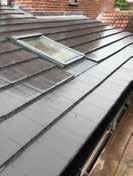












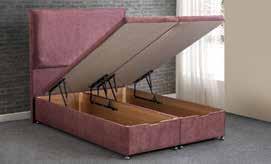











I started KS Timber midway through lockdown after spotting a gap in the market for scaffold boards, thanks to the rising popularity of the rustic look. Before that, I spent 20 years as a sales manager in the construction industry, where I built a reputation for great service - being late is one of my biggest pet hates!
Since launching, I've supplied everything from movie sets to local projects, with customers ranging from furniture makers and farmers to restaurants and allotment holders. My most regular visitors, though, are members of the public creating all sorts of unique pieces.
The boards are made from European whitewood spruce, sourced from the UK, Germany, and Austria. They’re especially popular for home bars and man (or woman ��) caves - which really took off during lockdown.







Hot sunny weather and even drought pose many problems for a lot of our wildlife species. However, the insects such as butterflies and moths can find benefit, at least in the short-term, in the scorching conditions of recent months. Many of these creatures have had a bad time in recent decades with pollution and habitat loss compounding the vagaries of climate change. Yet with this year’s dry spring and now blistering hot summer, quite a number have come into their own, and this includes both regionally resident species and increasingly, new arrivals from the south. I will look at damselflies and dragonflies in a later article but for now I want to focus on butterflies and moths, the former exclusively day-flying and the latter predominantly, but by no means totally night-flying.
For butterflies, garden buddleias are a real treat attracting large numbers of spectacular species like red admirals, small tortoiseshells, peacocks, painted ladies, commas, and various whites. However, a brambly woodland edge, woodland ride or glade, or a sheltered wild spot in a garden can be a rich place for butterfly spotting. Watch out in particular for the moth-like fat-bodied, darting ‘skippers’, the now ubiquitous speckled wood, late brood brimstones, or the increasingly frequent silver-washed fritillary. Some of these like the speckled wood were very uncommon and limited to southern England only a few decades ago



but are now found north to the tip of Scotland. Moths are also doing well this year and mix local species with ones migrating in their thousands from Europe and across the North Sea. Warm and humid evenings provide ideal conditions for many of these insects which mix myriads of tiny species known as ‘micros’ and large numbers of bigger ones called ‘macros’. Identification of some commoner species like the beautiful swallowtail moth is pretty easy, but for many of the others this is something for the specialist and ‘mothing’ enthusiast. [And there are a surprising number of them!] At least today it is possible to get to grips with these beasties with help from internet websites and discussion groups, digital photography, and excellent, illustrated handbooks. For most of us though, I think simply appreciating the beauty and enchantment of these wonderful insects is probably enough. Visitors to gardens and night-time kitchen windows include huge numbers of yellow underwings, silver-Y’s, pugs, footmen, carpets, magpies, and many others. Spectacular individuals include huge hawk-moths, eggars, emperors, and fox moths found on moors and heaths. Some of these insects are resident in the south but in hot summers are spreading northwards, and worth watching out for!





Professor Ian D. Rotherham, researcher, writer, broadcaster on wildlife and environmental issues in the Peak District and elsewhere, is contactable on ianonthewildside@ukeconet.org. Follow his website www.ukeconet.org, blog www.ianswalkonthewildside.wordpress.com/ & Twitter @IanThewildside Bluesky @ianthewildside.bsky.social















Garden Services
All aspects of garden maintenance
No job too big or too small




Please contact Paul for a free no obligation quote!

Find us on Facebook Harris Fencing Derbyshire



Good qualit y work at a competitive price
All major tree works
Seasonal tidy ups
For a FREE no obligation quote contact Phil on


079 83 97975 5

Lots of heat, not much rain, beautiful summer. But conditions which can be pretty challenging for our gardens.
Lawns will recover, so don’t feel you have to keep watering them all the time. A little water every day just makes the grass – and other established plants - develop shallow roots and makes them more vulnerable. If you are going to water make it deep. Bedding plants – i.e. in containers - need water early morning and/or evening so they don’t get “sunburnt” by water drops and splashes.
Tomatoes need a weekly potassium feed once a week, but try to reduce watering unless it is really hot as it may cause the fruit to split. But cut back lower leaves to keep ventilation good and allow the plant to focus on fruit.
You can continue to feed most things – the same feed you give tomatoes is also acceptable for most other plants – high potassium is helpful for producing flowers and fruit for bedding plants.
Back to the slugs. They’re still around, especially if we get sudden downpours. Garlic seems to be gaining ground (pardon the pun) as a deterrent. One head of garlic, crush or blitz in a food processor with 200 mls of water. Soak overnight with an extra 700 mls of water and strain. Use direct on particular problem plants, - either spray leaves or around base, or dilute in a watering can for an upkeep dose once every few days or after rain. Slugs don’t like the smell and it acts as an irritant to their skin. Doesn’t harm wildlife or pets. Worth trying?
Prune lavender back after flowering to an inch of new growth above the wood for a good show next year.


























